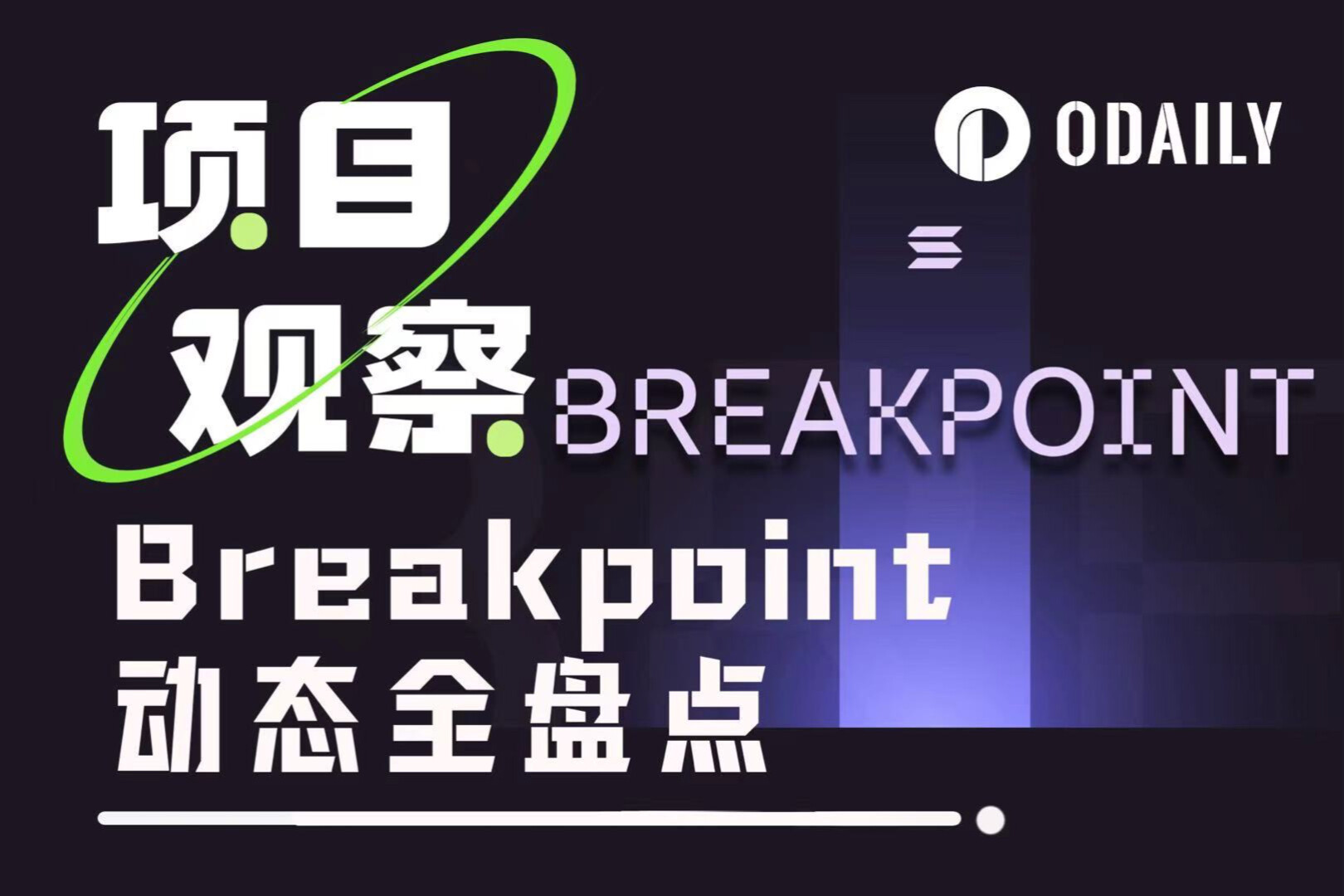Data availability solutions and project inventory
DA solution inventory
In the previous article on data availability,Web3 Popular Science|Why is data availability so important for Layer 2? (superior)》, we introduced that the data availability (DA) problem faced by L2 is mainly the trade-off between security and cost. Under the trade-off, on-chain and off-chain DA solutions have also been produced. The following will introduce these two different solutions in detail.
On-chain solution: Proto-Danksharding
The on-chain solution means that L2 still uses Ethereum as the DA layer and relies on Ethereum to reduce data availability costs.
Proto-Danksharding (aka EIP-4844) is Ethereum’s solution to reduce data availability costs. It introduces a new transaction format - Blob. The transaction data uploaded by L2 will be stored non-permanently on the Ethereum consensus layer in Blob format, bringing cheaper data availability to L2.
This means that Ethereum will serve as a real-time bulletin board in the future. The data on the board will be deleted after a period of time, and L2 must find a way to store backups of all data.
Proto-Danksharding is expected to go live in Ethereum’s Cancun upgrade at the end of this year.
Off-chain solutions
In laymans terms, the off-chain solution is to no longer use Ethereum as the DA layer, and instead look for more economical ways to obtain data availability. According to differences in decentralization and security, off-chain solutions can be divided into four types: Validium, Data Availability Committee (DAC), Volition, and general DA solutions.
Validium
Among the expansion plans initially explored by Ethereum, the one that uses validity proof and publishes data on the chain is called ZK Rollup. The one that also uses validity proof but publishes data off-chain is called Validium; the one that uses fraud proof and publishes data off-chain is called Validium. The one published on the chain is called OP Rollup, and the one that also uses fraud proof but publishes the data off the chain is Plasma.
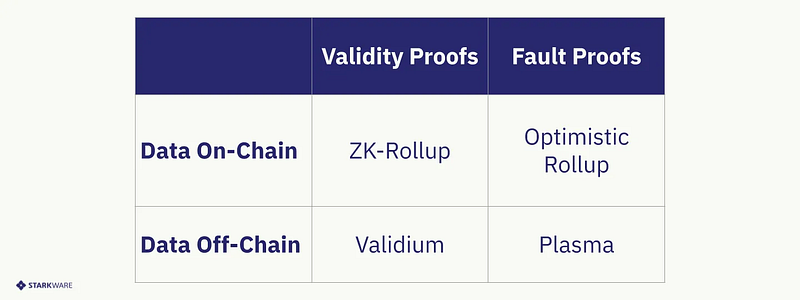
Plasmas expansion plan has now been abandoned by Ethereum. After Ethereum announced an expansion route centered on Rollup, Validium gradually became uninterested. But because the transaction data released by Validium to the off-chain is managed by a centralized operator, Validium is now specifically referred to as a highly centralized DA solution.
Under this model, although the privacy of the transaction parties is greatly protected and the DA cost is reduced to the lowest, the risk is also the highest. If the off-chain operator fails or does evil, the users funds will not be recovered.
Data Availability Committee (DAC)
In order to reduce the single point of failure risk caused by a single operator, Validium is currently mostly used with a Data Availability Committee (DAC). DAC is similar to a consortium chain, consisting of multiple authoritative or trusted node members. They will save copies of transaction data and expose the data in the event of operator failure or malicious behavior to facilitate users to withdraw funds.
The running cost of DAC is also relatively low, but from a security perspective, a small DAC (8-10 people) is still prone to private key theft or collective malicious behavior, and the funds on the chain will also be frozen or stolen.
Volition
Volition is a hybrid model that allows users to choose whether the data of a single transaction is published on-chain or off-chain. For example, in a DEX that chooses this model, users can control multiple accounts, transfer assets to off-chain data accounts for frequent and cheap transactions when transactions are needed, and then transfer assets to on-chain data accounts after the transaction is completed.
Therefore, compared with pure Validium, Volition can inherit part of the security of Ethereum.
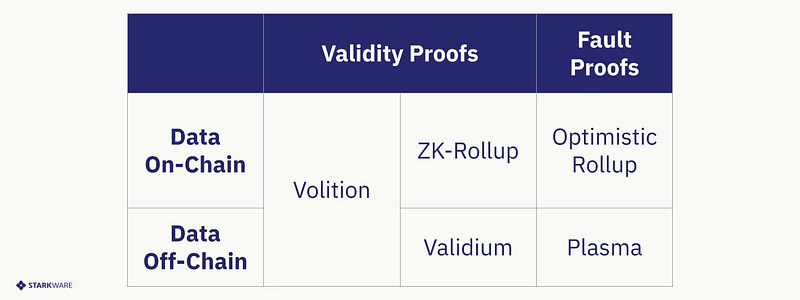
Universal DA solution
The DA off-chain solutions discussed above are all in the context of Ethereum, and there is also a general type of DA solution. They can not only provide data availability for Ethereums L2, but also serve more chains and projects. For example, EigenDA, Celestia, Avail, etc. will be introduced in detail in the next section.
Although the technical implementation of universal DA solutions varies, the general idea is to enhance the security of data availability in order to achieve public chain-level security. Therefore, they have their own verification nodes, block producers, consensus mechanisms, etc., but they do not have smart contracts.
DA layer project introduction
Under the idea of modular blockchain, Ethereum accounts for almost 90% of the consensus layer and settlement layer. After fierce competition, the execution layer has initially formed a four-legged pattern (i.e. Optimism, Arbitrum, Starknet, zkSnyc ). Only the data availability (DA) layer is still in its infancy. Below, the author will introduce several popular DA layer projects for readers’ reference.
StarkEx
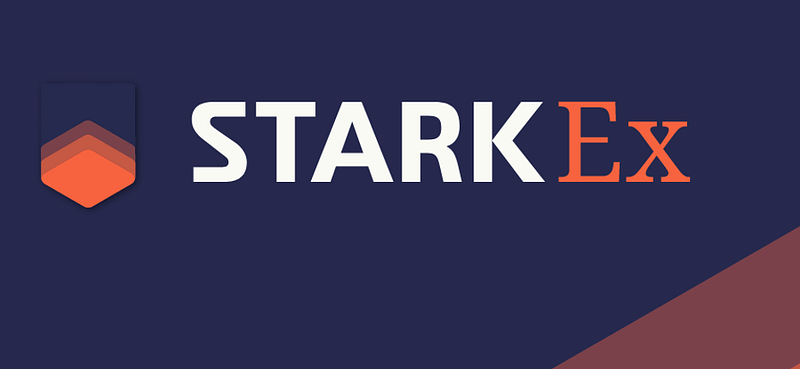
StarkEx is a framework developed by the StarkWare team to provide expansion solutions for specific applications. Because it also provides data availability solutions for applications, it is also classified as a DA layer project. StarkEx has three data availability modes: on-chain, Validium and Volition. What is different from the pure Validium introduced above is that the Validium solution provided by StarkEx incorporates DAC to improve security.
Projects currently using StarkEx to provide data availability include dYdX v3, Immutable, Sorare, DeversiFi, and others.
zkPorter
zkPorter is an off-chain DA solution proposed by Matter Labs, the RD team of zkSync, in April 2021. zkPorter is an independent chain specifically for L2 to publish transaction data. The chain maintains security through the PoS consensus mechanism. zkSync token holders can pledge tokens to become zkPorters guardians (Guardians) to verify and sign blocks. This is one of the reasons why the community thinks that zkSync will issue coins and airdrops, because zkPorter’s consensus mechanism involves governance tokens.
In addition, in Matter Labss vision, accounts on zkPorter can interact seamlessly with accounts or contracts on ZK Rollup (zkSync Era). From a users perspective, the only obvious difference may be that the cost of a zkPorter account will be much cheaper. times.
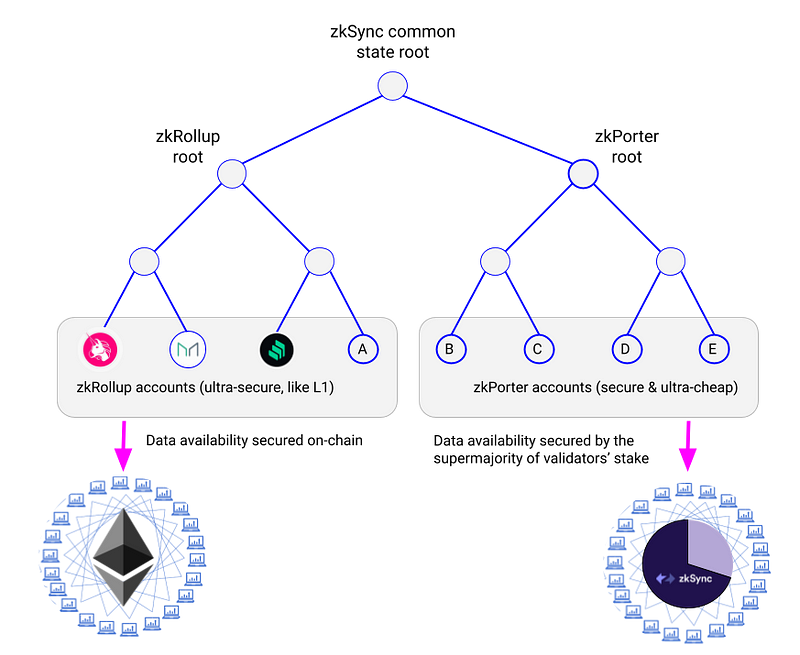
ZK Rollup has strong interoperability with zkPorter
However, it is worth noting that although zkPorter was proposed a few years ago, there is still no movement, and Matter Labs has not disclosed any information about the zkPorter test network and development progress.
EigenDA
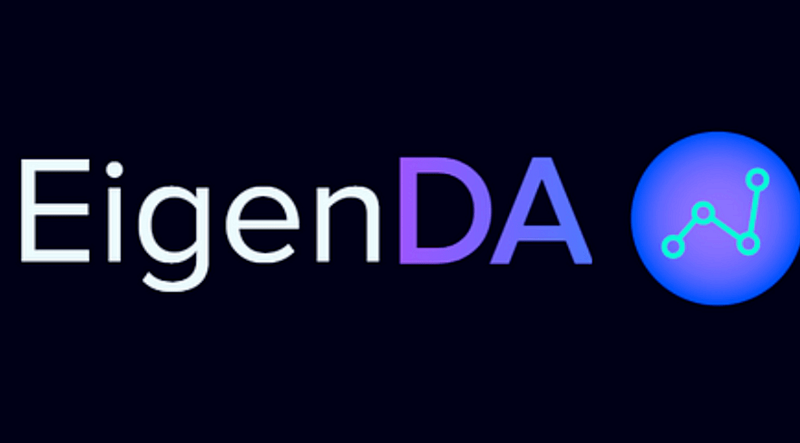
EigenDA is a DA layer project developed based on EigenLayer. Friends who do not know about EigenLayer can read the previous articles of Dongjian Weekly Research Report|EigenLayer: Strengthening the security of Ethereum and inspiring a new era of staking》。
But fundamentally speaking, unlike general-purpose DA projects Celestia and Avail, EigenDA is a middleware. It does not have its own consensus mechanism, and its security is obtained through EigenLayers Ethereum validator re-pledging mode.
EigenDA is also the first Active Verification Service (AVS) on EigenLayer. Re-pledgers re-pledge ETH into EigenDA to perform data verification services to obtain rewards. The buyer (L2) publishes data to EigenDA to obtain lower transaction costs and more High TPS.
Although EigenDA has not yet been launched on the test network, many teams have planned to integrate EigenDA into their L2, such as Mantle, Layer N, Offshore, etc.
Celestia
Celestia is a general-purpose DA public chain with its own verification nodes and PoS consensus mechanism. Although it is more expensive than other off-chain DA solutions, its security is significantly higher than them.
Celestium is an Ethereum L2 chain that uses Celestia as the DA layer and Ethereum as the settlement and consensus layer.
The way Celestium achieves data availability is as follows:
Celestium uploads the proof data (Proofs) to Ethereum as usual, but publishes the transaction data (Transaction Date) to Celestia;
The data availability certificate is signed by Celestias verification node and sent to the DA Bridge Contract deployed on Ethereum for verification and storage;
It can be accessed at any time by L2 contracts on Ethereum.
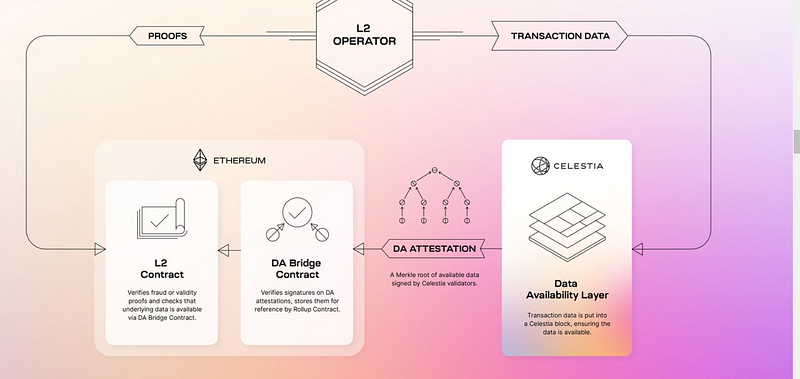
Celestia has completed two rounds of financing, completing a seed round of US$1.5 million in March 2021 and a second round of US$55 million in October 2022, with participation from multiple well-known VCs.
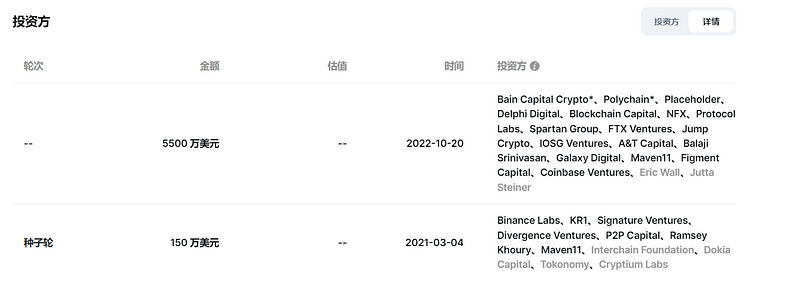
At the same time, the airdrop news released by Celestia on September 26 has drawn people’s attention to the modular blockchain and DA layer track.
According to official instructions, Celestia will airdrop TIA (Celestia’s native asset) to 7,579 developers and 576,653 on-chain addresses. Developers include public products and key protocol infrastructure, Eth Research, public contributors to DA layer projects (such as Avail, EigenLayer, and Solana), and on-chain addresses include active users in Ethereum Rollup and stakers of Cosmos Hub and Osmosis. IBC repeater.
Avail

Avail was originally a project founded by Polygon Labs in 2020 to solve data availability problems, but it separated from Polygon in March this year and runs as an independent DA public chain, no longer limited to Polygon or Ethereum.
Technically, it is more complex than Celestia. The mainnet is expected to be launched in the first quarter of 2024, and currently only the testnet is online. The Avail testnet has now entered its second phase, and users have multiple ways to participate, including:
Token acquisition: Users can acquire AVL testnet tokens to explore staking and nomination functions;
Blockchain development: Users are free to develop modular blockchain applications or chains integrated with Avail;
Network roles: Users can choose to join the testnet as a validator or light client, thus facilitating the data verification process.
Obviously, compared to L2 interaction, the interaction threshold of DA layer projects is higher, but since Celestia has announced the airdrop, qualified partners can explore and interact.
Summary and reflections
In the future roadmap of Ethereum presented by Vitalik in 2022, it clearly shows that after The Merge, the focus of The Surge, the next stage of Ethereum to be implemented, is to further reduce the cost of publishing data for L2 through EIP-4844. This means that Ethereum is only willing to separate the execution layer, and hopes to continue to maintain the functions of the DA layer, settlement layer and consensus layer.
Therefore, it is not difficult to explain why the EIP-4844 proposer and L2B EAT are not inclined to admit that expansion projects using off-chain DA solutions are L2.
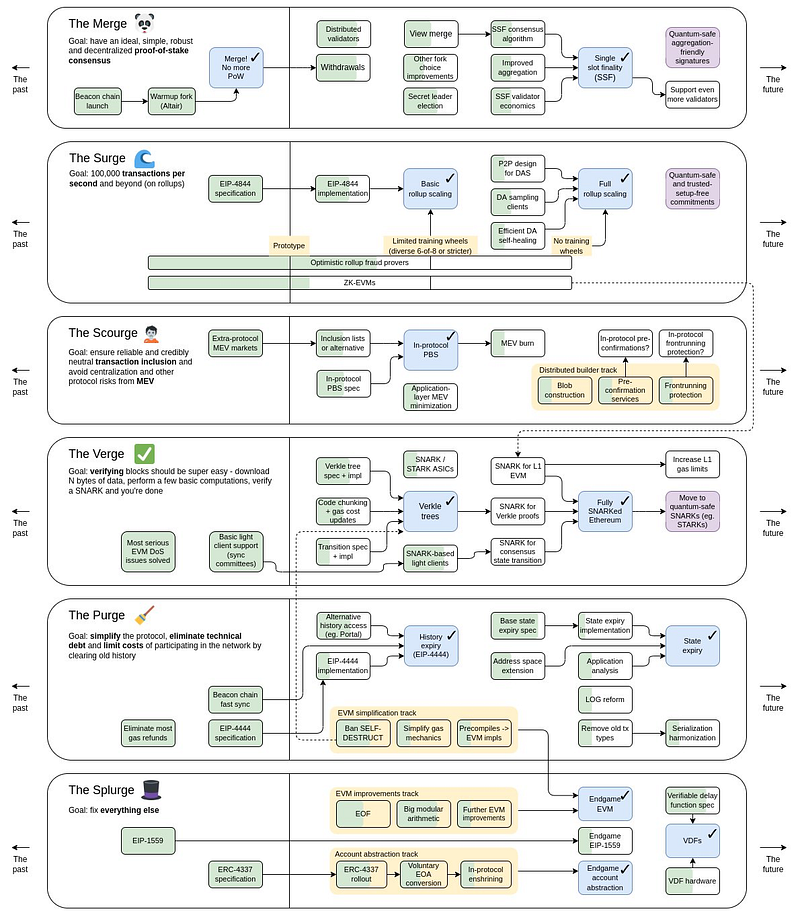
After the Cancun upgrade is officially completed, these off-chain DA layer projects (especially the DA public chain) may directly face business competition with Ethereum. By then, in addition to focusing on lower costs, what will they do? How about improving your competitiveness?
Celestia chose to issue coins at this time to incentivize developers and active addresses on the chain. It may also have strategic considerations to seize the opportunity and win over people. At the same time, for users, it is also worth looking forward to whether big-money projects like Optimism and Arbitrum will emerge in the competition at the DA level in the future.
Disclaimer: All contents on this website may involve project risk matters and are for science and reference purposes only and do not constitute any investment advice. Please treat it rationally, establish a correct investment philosophy, and increase your awareness of risk prevention. It is recommended to comprehensively consider various relevant factors, including but not limited to personal purchasing purpose and risk tolerance, before interacting and holding.
Copyright notice: The copyright of the quoted information belongs to the original media and author. Without the consent of Jian Shu J Club, other media, websites or individuals are not allowed to reprint the articles on this site. Jian Shu J Club reserves the right to pursue legal liability for the above-mentioned acts.
References:
【 1 】PSE Trading: New Narrative of Module Blockchain—Competition among DA Layer Champions
【 2 】The Ethereum Off-Chain Data Availability Landscape
【 3 】Intro to EigenDA: Hyperscale Data Availability for Rollups
【 6 】Quantum Gravity Bridge: Secure Off-Chain Data Availability for Ethereum L2s with Celestia


